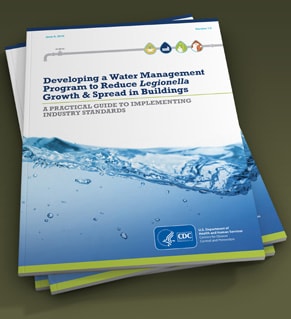Considerations for Public Hot Tub Operators
Low water volumes combined with high temperatures and heavy bather loads make public hot tub operation challenging. The result can be low disinfectant levels that allow the growth and spread of a variety of germs (e.g., Pseudomonas and Legionella). These germs can cause skin and respiratory Recreational Water Illnesses (RWIs). Operators that focus on hot tub maintenance and operation are the first line of defense in preventing the spread of RWIs.
The Model Aquatic Health Code (MAHC) is a voluntary guidance document based on science and best practices. Its purpose is to help state, territorial, and local authorities, as well as the aquatics sector, make swimming and other water activities safer.
If you are involved in hot tub maintenance, you should
- Obtain state or local authority-recommended operator and chemical handling training. Read a list of national training courses.
- Read and adhere to the Operating Public Hot Tubs fact sheet for pool staff/owners pdf icon[1 page].
If cases of Legionnaires’ disease or Pontiac fever are linked to a hot tub, it is important to take samples for laboratory testing before disinfecting the hot tub. However, the hot tub should be turned off immediately to prevent more people from getting sick. CDC has a video that walks through the process of collecting water samples from hot tubs for environmental testing. Detailed instructions for disinfecting hot tubs are available on the fact sheet Disinfection of Hot Tubs that Contain Legionella pdf icon[2 pages].
Developing a Water Management Program to Reduce Legionella Growth and Spread in Buildings
This toolkit provides practical guidance on how to implement industry standards by identifying areas or devices (such as public hot tubs) in buildings where Legionella might grow or spread to people so that risk can be reduced through effective water management, including public hot tubs.
